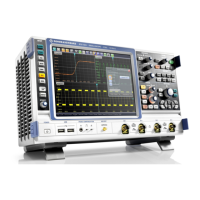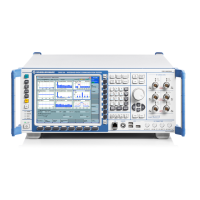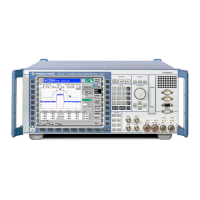Protocol Analysis
R&S
®
Scope Rider RTH
205User Manual 1326.1578.02 ─ 12
●
Data: up to 8 bytes of data can be transmitted for CAN.
●
CRC: cyclic redundancy check. Checks the integrity of the frame contents.
●
ACK: acknowledgement. This is a recessive bit that is overwritten by the node, if
the message was transmitted correctly.
●
EOF: end-of-frame: marks the end of the message.
●
IFS: interframe space. Separates a data or remote frame from the preceding
frames.
CAN FD data message format
There are many common features between the CAN and CAN FD protocol. The main
differences are:
●
CAN FD defines a data length of up to 64 bytes.
●
CAN FD defines two bit nodes, one for arbitration phase and one for data phase.
●
The transmission of control field from BRS bit onwards, data field and CRC field at
higher data rate.
●
The CRC size and computation differ from CAN.
The CAN FD protocol also defines two formats for the data frame: the base frame for-
mat and the extended frame format. The data frames of the CAN FD are built as fol-
lows:
Figure 9-25: CAN FD basic frame
Figure 9-26: CAN FD extended frame
There are many common fields that are used both for the CAN and CAN FD frames.
For a description of those fields, see "CAN data message format" on page 204.
The following fields are present also for the CAN FD frames:
●
Data: up to 64 bytes of data can be transmitted for CAN FD.
●
FDF: FD format. Distinguishes between the CAN and CAN FD frames.
●
BRS: bit rate switch. Determines if the bit rate is turned on for the CAN FD frame.
●
ESI: error state indicator. It is dominant for error active nodes and recessive for
error passive nodes.
CAN and CAN FD (Options R&S
RTH-K3, R&S RTH-K9)

